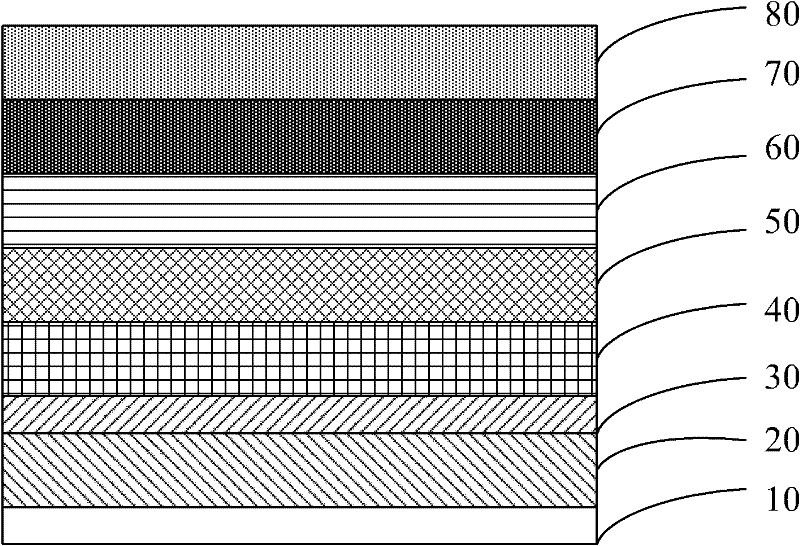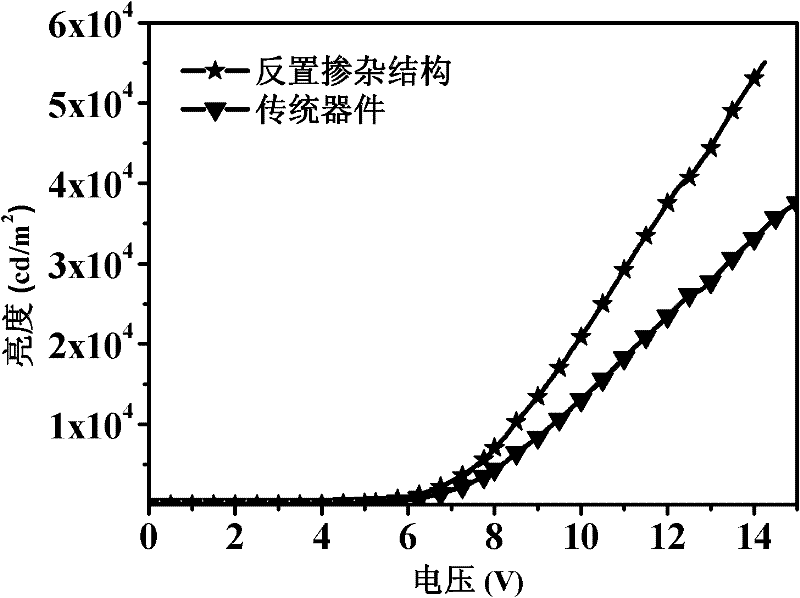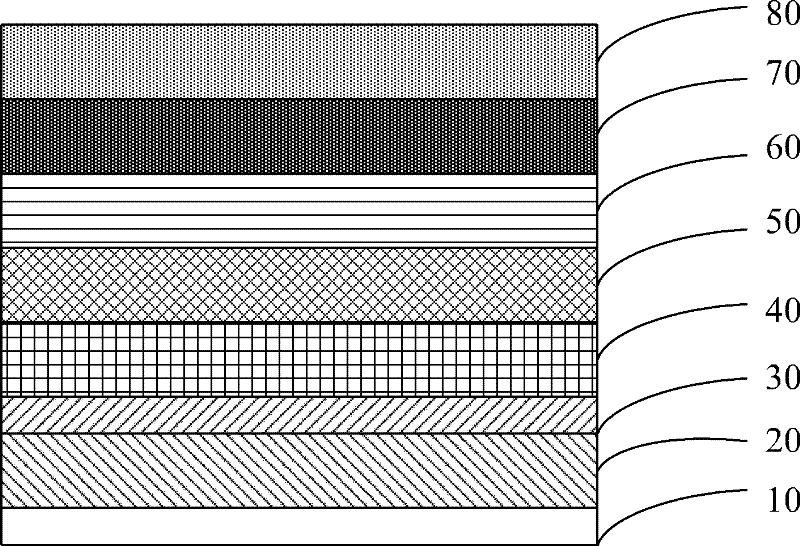Organic electroluminescent device
An electroluminescent device and electroluminescent technology, which is applied in the direction of electro-solid devices, luminescent materials, electrical components, etc., can solve the problems of reduced device repeatability, affected device performance, material absorption loss, etc., so as to reduce luminous loss and improve light The effect of emissivity
- Summary
- Abstract
- Description
- Claims
- Application Information
AI Technical Summary
Problems solved by technology
Method used
Image
Examples
preparation example Construction
[0038] The preparation method of the above-mentioned organic electroluminescence device comprises the following steps:
[0039] (1) First, ultrasonically treat the glass substrate with detergent, acetone, ethanol and isopropanol for 15 minutes respectively;
[0040] (2) Prepare a layer of reflective layer with a thickness of 50-200nm on one side of the glass substrate in (1). The preparation method includes various suitable methods, such as evaporation, sputtering, spraying, chemical evaporation deposition, electrochemical method etc., preferably sputtering;
[0041] (3) Then prepare a conductive film with a thickness of 70-200nm on the other side of the glass substrate. The preparation method includes various suitable methods, such as evaporation, sputtering, spraying, chemical evaporation deposition, electrochemical methods, etc., Preferably sputtering;
[0042] (4) A cathode, an n-type doped electron transport layer, a p-n type doped light-emitting layer, a p-type hole tr...
Embodiment 1
[0045] Example 1: Firstly, the glass is ultrasonicated with detergent, acetone, ethanol and isopropanol for 15 minutes respectively, then a layer of Ag with a thickness of 100 nm is evaporated on one side of the glass substrate, and then a layer of Ag is sputtered on the other side of the glass ITO conductive film with a thickness of 120nm, 150nm of Ag and 40nm of n-type doped TPBi / Cs are sequentially evaporated on the side with the conductive film 2 CO 3 , where Cs 2 CO 3 The doping ratio of 10%; 30nm doped light-emitting layer TPBi / NPB / DCJTB, wherein the mass ratio of NPB to TPBi is 1:1, the doping ratio of luminescent material is 5%; 40nm p-type doped MoO 3 / NPB, where MoO 3 The doping ratio is 30%; finally, a layer of Ag with a thickness of 120nm is vapor-deposited.
Embodiment 2
[0046] Example 2: Firstly, the glass is ultrasonicated with detergent, acetone, ethanol and isopropanol for 15 minutes respectively, and then a layer of Ag with a thickness of 50 nm is evaporated on one side of the glass substrate, and then a layer of Ag is sputtered on the other side of the glass ITO conductive film with a thickness of 150nm, 200nm of Ag and 40nm of n-type doped TPBi / Cs are sequentially evaporated on the side with the conductive film 2 CO 3 , where Cs 2 CO 3 The doping ratio of 5%; 30nm doped luminescent layer TPBi / NPB / DCJTB, wherein the mass ratio of NPB to TPBi is 1:1, the doping ratio of luminescent material is 3%; 30nm p-type doped MoO 3 / NPB, where MoO 3 The doping ratio is 25%; finally, a layer of Ag with a thickness of 100nm is vapor-deposited.
PUM
| Property | Measurement | Unit |
|---|---|---|
| luminance | aaaaa | aaaaa |
| luminous efficiency | aaaaa | aaaaa |
| thickness | aaaaa | aaaaa |
Abstract
Description
Claims
Application Information
 Login to View More
Login to View More - R&D
- Intellectual Property
- Life Sciences
- Materials
- Tech Scout
- Unparalleled Data Quality
- Higher Quality Content
- 60% Fewer Hallucinations
Browse by: Latest US Patents, China's latest patents, Technical Efficacy Thesaurus, Application Domain, Technology Topic, Popular Technical Reports.
© 2025 PatSnap. All rights reserved.Legal|Privacy policy|Modern Slavery Act Transparency Statement|Sitemap|About US| Contact US: help@patsnap.com



